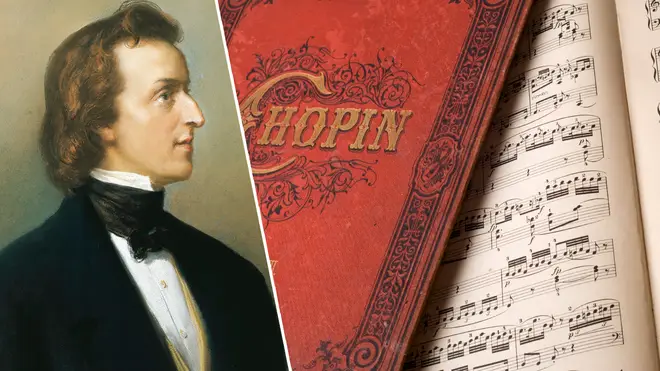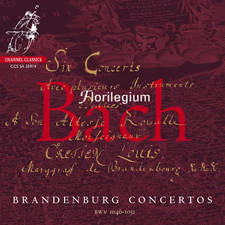Best Chopin music: 10 essential pieces by the Romantic composer
16 April 2021, 16:07 | Updated: 16 April 2021, 16:33

From Etudes to Nocturnes – here’s the very best of Frédéric Chopin, 19th-century piano virtuoso and leading figure of the Romantic era.
Frédéric Chopin is almost exclusively associated with the king of instruments, writing across his lifetime over 200 works for solo piano, among them mazurkas, waltzes, nocturnes, études, preludes and concertos.
Look to the beating heart of Chopin’s music, and you’ll find improvisation. Like Bach, a great inspiration for the Polish Romantic, Chopin was an incredible improvisor, and his music’s many trills and ornaments are far from an add-on – rather, a central part of the work.
His works were also deeply shaped by Polish folk music, the Classical tradition of Mozart and Schubert, and the intimate atmosphere of Paris salons, where he always felt most comfortable playing to a live audience.
Here’s the very best among Chopin’s works.
Read more: 10 of the best Romantic composers in music history >
-
Fantaisie-Impromptu (1834)
The posthumously published Fantaisie-Impromptu is one of Chopin’s most ostentatiously improvised works, and a fantastic show piece for the piano. While we take these ornamentations as gospel now, Chopin frequently forgot his own melismatic inventions, and would play them differently every time he performed live.
Read more: Chopin’s face is brought to life in artist’s incredible 3D portraits >

A stunning visualisation of Chopin’s Fantaisie-Impromptu
-
Andante Spianato et Grande Polonaise Brillante (1834)
This piano epic is a beast of two characters. The Andante Spianato is a gentle, rippling affair, with a rather processional 3/4 section at its centre, while the Grand polonaise begins with a great fanfare in the brass section, coaxing the solo piano to lead on in dance form. It’s a wonderful story of a piece, one that invites you to stay with it through its many twists and turns.
Read more: What if Chopin had written ‘Happy Birthday’? >

Kate Liu – Andante Spianato and Grande Polonaise Brillante in E flat major Op. 22 (second stage)
-
Nocturne in C sharp minor, Op. posth. (1870)
A devastating melody that lures you in at pianissimo, and one most likely recognised for its use in Roman Polanski’s The Pianist. As depicted in the film, it was the piece played by Holocaust survivor and Polish classical pianist Władysław Szpilman during the last live Polish radio broadcast on 23 September 1939, when Warsaw was invaded by the German army.
First published 26 years after Chopin’s death, the Nocturne in C sharp minor is one of the composer’s great posthumous works.

Jan Lisiecki – Chopin: Nocturne in C sharp minor, Op. Posth.
-
24 Preludes (1839)
As Bach is to The Well-Tempered Clavier, Chopin is to the 24 Preludes. In this extraordinary piano cycle, the composer covers all major and minor keys and uses a circle of fifths as his guide, following each major key with its relative minor.
Each prelude contains a unique idea or feeling, from the pianistic precipitation in ‘Raindrop’ to the haunting E minor prelude, which was played at Chopin’s own funeral. With these intricate musical sketches Chopin gave new meaning to the ‘Prelude’ and challenged attitudes to smaller-scale music.
Musicologist Henry Finck once said: “If all piano music in the world were to be destroyed, excepting one collection, my vote should be cast for Chopin’s Preludes.”

Lang Lang — Chopin, “Raindrop” Prelude on the Steinway & Sons Spirio | r
-
Etudes, Op. 10 (1839)
Chopin’s Études, of which there are 27 in total, formed the foundations for a new style of piano playing, and comprise some of the most fiendish works ever written for the keyboard.
Some have been denominated over time including the Op.10 No.3, which is often labelled ‘Tristesse’ (Sadness) or ‘Farewell’ (L’Adieu), but neither names were given by the composer himself, rather by his critics. Chopin held his Etude No.3 in extremely high regard, telling one of his pupils he “had never in his life written another such beautiful melody”.

Chopin - Etude Op. 10 No. 3 (Tristesse)
-
Piano Concerto No. 1 (1830)
We know it as his first, but this was actually the second piano concerto Chopin wrote (it just happened to be published before the ‘real’ No. 1). Deeply expansive and expressive, it’s hard to believe young Frédéric wrote this while in his late teens. The melody in the second movement, ‘Romance’, is particularly exquisite.
At its premiere in 1830, Chopin played the piano part himself, marking his final public appearance in Poland. He left for Vienna and then Paris, where he remained for the rest of his life.

Frédéric Chopin: Piano Concerto No. 1 e-minor (Olga Scheps live)
-
Fantasy on Polish Airs (1830)
Chopin was deeply fond of this work, referring to it as ‘the Potpourri on Polish Themes’. It opens with a cantabile interplay between the strings and woodwinds, but the great musical Easter egg comes at bar 10, as the whole orchestra moves from pianissimo to fortissimo for two forthright, military motifs. Stay with it, and enjoy Chopin’s elegant weaving together of Polish and Ukrainian folk songs and dances.

F.Chopin - Fantasia on Polish Airs Op. 13
-
‘Minute’ Waltz in D flat major, Op. 64, No. 1 (1847)
A delightful piano romance of trills, extensive rubato and playful dynamics, the ‘Minute’ waltz is deliciously fun to both play and hear. Easily confused by its misnomer, the ‘Minute’ waltz is so called because it is ‘miniature’, not because it should be played in a minute (mind you, that hasn’t stopped musicians giving it a go…).
It was originally titled ‘The Waltz of the Little Dog’, because as Chopin was composing the music, it is so told that a little dog was running around the piano, merrily chasing its tail. Chopin nods to his canine companion’s enthusiasm in the middle section, with a series of grace notes in the right hand which represent the bell around its neck.

Warren Mailey-Smith plays Chopin's 'Minute' Waltz
-
Nocturnes Op. 9 (1832)
Chopin was an expert in the art of writing and playing ‘cantabile’ (in a singing style), and you won’t find more charming melodies than those of the Nocturnes in B flat minor and E flat, largely considered Chopin’s most famous, from his Nocturnes Op. 9.
As with his piano concertos, the two nocturnes were composed around 1830, when Chopin was in his early twenties. The first has a delightful rhythmic freedom and unexpectedly docile middle section, while No. 2’s simple yet beguiling melody haunts from start to finish, inviting us into an intimate world where every note matters.

Ingolf Wunder - Chopin Nocturne Op.9 No.2
-
Polonaises Op. 40
Chopin was one of the biggest exponents of the ‘Polonaise’, the French word for ‘Polish’, writing 23 of them. The ‘Military’ Polonaise in A major, so named for its precise, forthright manner, is paired with its rather more sombre twin, the Polonaise in C minor. The former was coined by leading Chopin interpreter Arthur Rubinstein as “the symbol of Polish glory”, while the latter he named “the symbol of Polish tragedy”.

Chopin Military Polonaise op 40 no 1 in A major
























